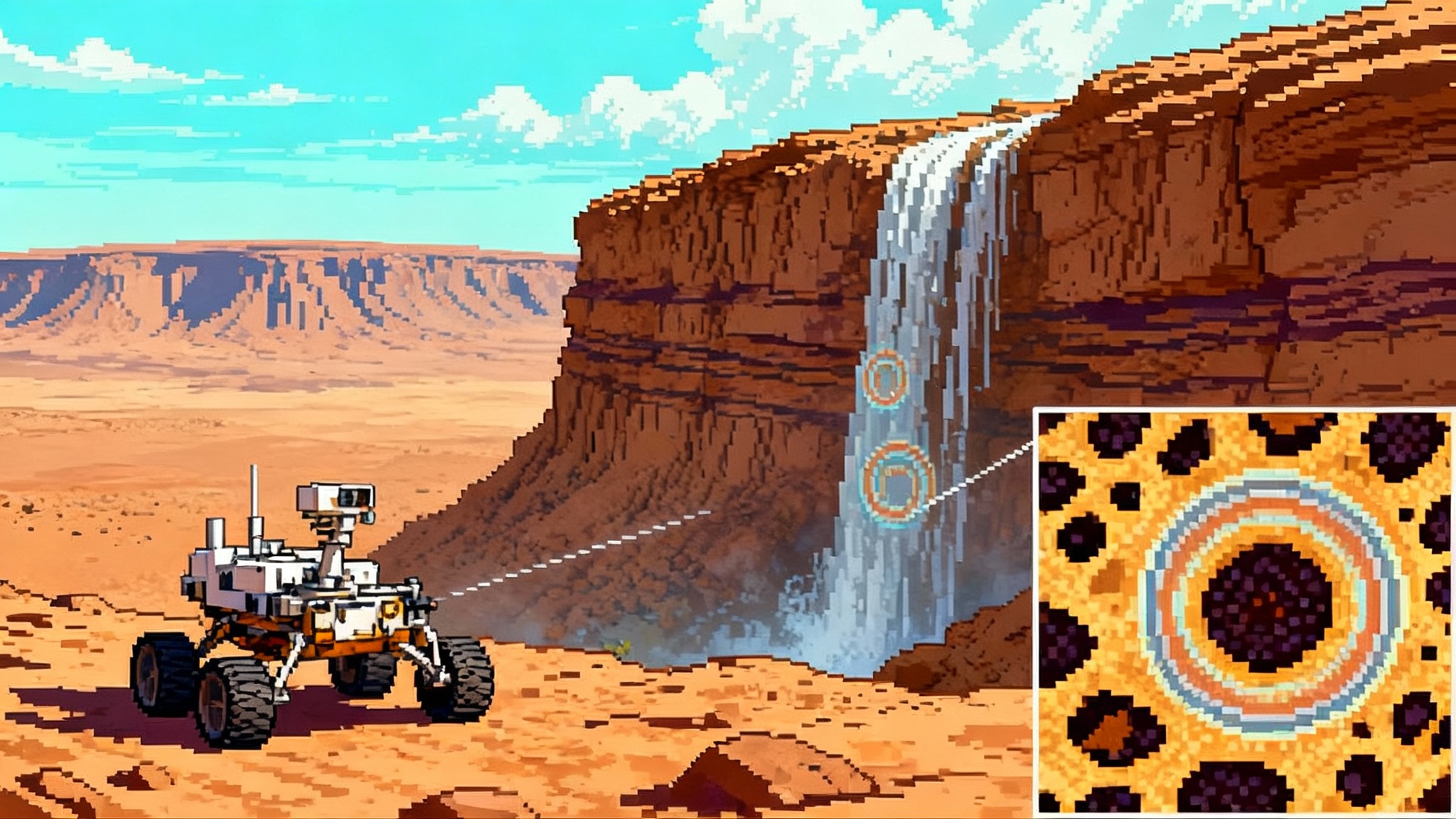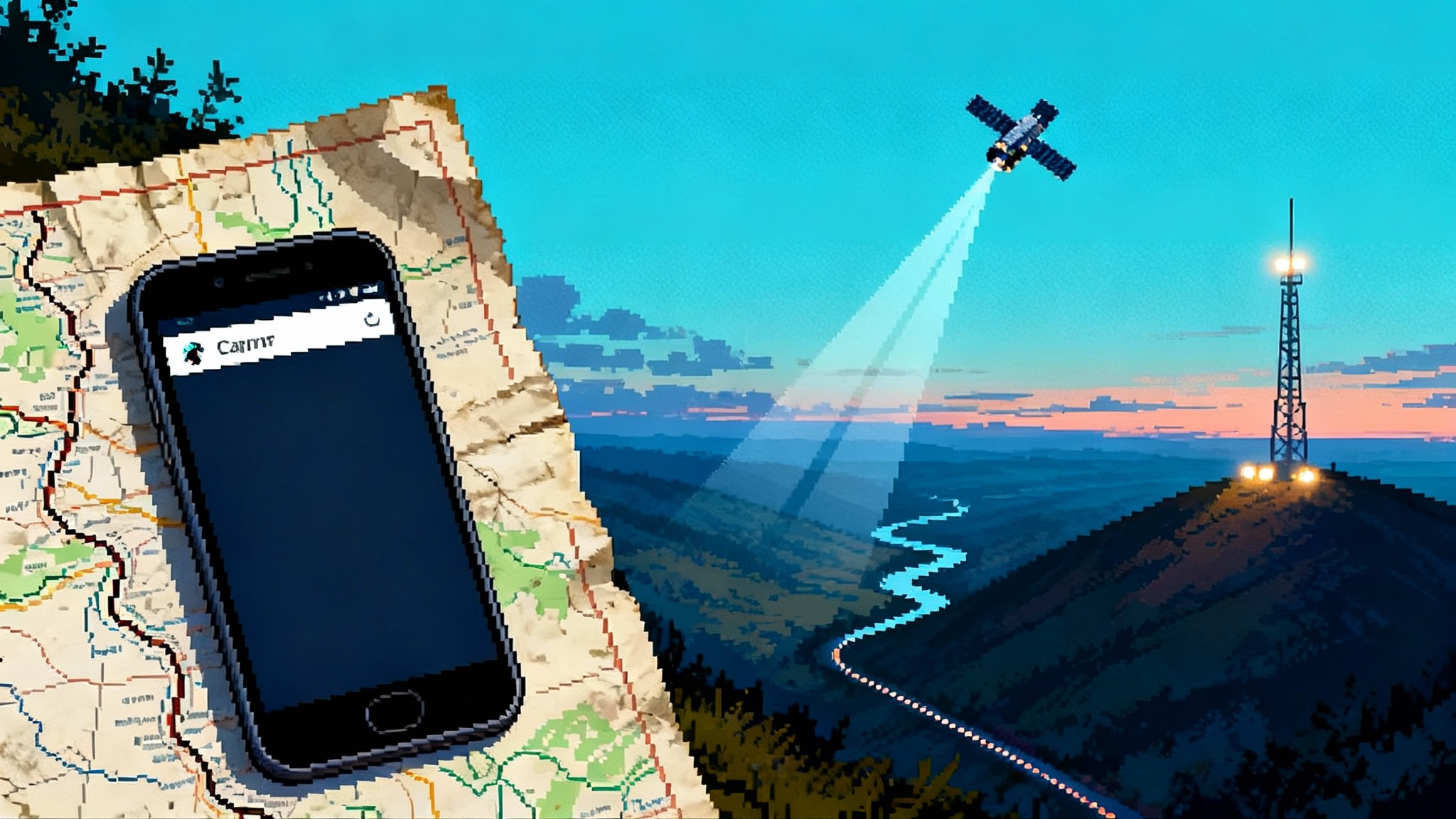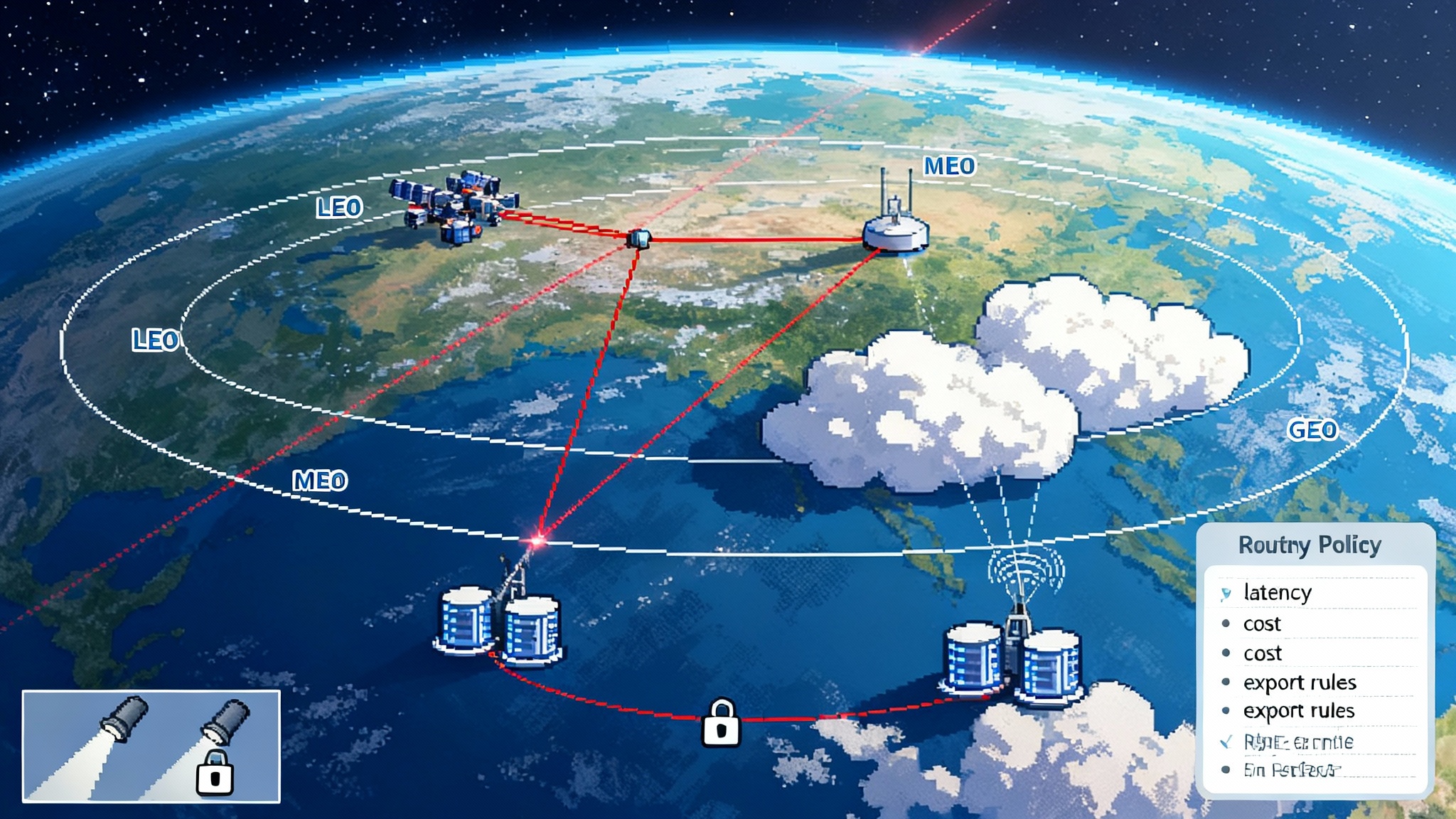Mars’s leopard spots: promise, proof, and the path home
Perseverance just found “leopard spot” minerals in Jezero Crater that a new Nature paper calls a potential biosignature. Here is what the results actually say, how CoLD ranks the claim, the tests needed to prove life, and why sample return is key.

The rock that made everyone sit up
On a dusty bench in Jezero Crater, Perseverance rolled up to an arrowhead shaped mudstone, cored it, and tucked away a sample the team nicknamed “Sapphire Canyon.” The host rock, “Cheyava Falls,” sits in the Bright Angel formation along Neretva Vallis, where an ancient river spilled into Jezero’s lake. Mudstones here once trapped fine sediments and organics in quiet water. That is why the rover came.
The surprise came later. In close up scans, the rock’s surface showed ringed, dark to pale patterns scientists started calling “leopard spots,” with peppery black “poppy seeds” in places. Those patterns are not paint. They are reaction fronts where minerals grew as chemistry changed through the rock. The team reports that two minerals dominate those fronts, vivianite, an iron phosphate, and greigite, an iron sulfide, alongside organic carbon signals. On Earth, that specific pairing often appears where microbes live off redox energy by shuttling electrons between iron, sulfur, phosphorus, and carbon. The finding, published as redox driven mineral and organic associations in Jezero Crater, labels the features a potential biosignature. That phrase matters.
Potential biosignature means exactly what it says. It is something that may have formed biologically, but could also arise without life. It is a pattern that deserves stronger tests, not a verdict.
What Perseverance actually saw
Two instruments did the heavy lifting. PIXL mapped elements at hair thickness scales, while SHERLOC probed organics and minerals with Raman and fluorescence signatures. Together they traced how vivianite rims and greigite interiors line up in concentric halos that cut across grains rather than hugging them, the sort of geometry you get when chemical fronts sweep through mud after deposition. There are several reasons astrobiologists perk up at this:
- The chemistry is energy rich for microbes. Iron and sulfur redox gradients, plus available phosphate and organic carbon, are standard metabolic playgrounds on Earth.
- Vivianite commonly forms in reducing, water rich muds with decaying organics. Greigite can be a product of microbial sulfate reduction or iron sulfide cycling.
- The textures look like reaction zones, not simple veins. That raises questions about how long lived, and how pervasive, the chemistry was.
Even with that, there are abiotic ways to get all of it. That is why the team sticks to potential.
Why it is not “life on Mars” yet
Astrobiology has learned the hard way to be conservative. Claims must climb what scientists call the Confidence of Life Detection ladder, often shortened to CoLD. Think of it as seven rungs from “interesting” to “independent confirmation.”
Here is a plain language walkthrough of those rungs:
- Detect a possible signal. You see something that could be biological, like unusual organics, textures, or energy gradients.
- Rule out contamination. Prove your signal is not hitchhiking from Earth or the spacecraft.
- Show the environment could support biology. The context must make sense for metabolism and preservation.
- Rule out non biology. Demonstrate that known abiotic processes cannot reasonably explain the signal.
- Find a second, independent line of evidence pointing to the same conclusion.
- Rule out remaining alternatives with deeper, orthogonal tests.
- Independent confirmation by another method, team, or mission.
With Sapphire Canyon, the mission has cleared rungs 1 and 2. The potential signal is real in the rock, not the rover. The local context, a once wet mudstone with preserved redox gradients, argues for rung 3 as well. Where the claim sits today is the jump to rung 4, showing that abiotic chemistry cannot plausibly make both the mineral pairing and the textures with the measured organics. That is the hard part on Mars with small instruments.
The lab work that would clinch a biological origin
Three families of measurements are the traditional kingmakers when you chase microbe made rocks. Perseverance cannot do them at the required precision. Earth labs can.
-
Isotopes that show metabolic fingerprints. Microbes favor lighter isotopes. If the greigite’s sulfur shows large, systematic fractionations in 34S versus 32S that match microbial sulfate reduction, or if the iron in vivianite carries fractionations consistent with dissimilatory iron reduction, that is powerful. The same goes for carbon in associated organics. These need high precision mass spectrometry on clean, targeted micro samples, often by secondary ion mass spectrometry and multiple collector IRMS on laser micromilled spots. The rover’s instruments do not reach that specificity.
-
Chirality that screams biology. Life on Earth selects one handedness of amino acids and sugars. Abiotic syntheses make racemic mixes. If returned samples show a strong, environment consistent enantiomeric excess in amino acids or lipid like molecules, and that excess co varies with the leopard spot fronts, the biological case strengthens. It also allows deep tests of contamination control, since Earth contamination often leaves a familiar chiral signature and distribution.
-
Microtextures in context. Under electron microscopes and x ray nanotomography, biologically mediated minerals often betray growth habits. Framboidal sulfides with narrow size distributions, epitaxial coatings that track cell surfaces, nanometer scale laminae that reflect periodic metabolism, or organo mineral associations that look templated rather than random. Fine scale cross sections cut with a focused ion beam can show whether organic carbon is inside crystals, wrapped around them, or smeared in cracks. The geometry matters as much as the chemistry.
Add to those three some cross checks. Are there trace metals that act as cofactors for the imagined metabolisms, like nickel or molybdenum in the right ratios. Do the minerals record low formation temperatures that fit biological pathways. Do multiple micro sites in the same core reproduce the same story. The case needs to be over determined.
Why we need to bring the rock home
You cannot do those tests in a rover body chilled by Martian night. You need carefully split chips in ultraclean labs, multiple instruments working in concert, and the freedom to rerun and argue through anomalies. That is why Mars Sample Return has always been the other shoe in Perseverance’s plan.
NASA’s current direction admits the old sample return architecture was too slow and too expensive. The agency says the baseline design would not deliver tubes until 2040. It is now seeking simpler, cheaper designs that could get key samples home in the 2030s, as described in its update on a new path to return Mars samples. The practical meaning is this: if Congress funds a leaner architecture and the agency holds the line on scope creep, a mid to late 2030s return is plausible. If budgets wobble, schedules slip.
There is a second reason to go slow enough to go fast. Life detection is not a single measurement. It is a campaign across labs. Planetary protection rules, chain of custody through a biosecure facility, and contamination knowledge must be in place before any drill touches a Martian core. Rushing that is how you lose public trust and scientific clarity.
Where ESA’s Rosalind Franklin fits
Europe’s Rosalind Franklin rover is back on the manifest. The plan calls for launch in 2028 and a landing in 2030. Its drill can reach up to two meters below the surface, where organics are better shielded from radiation. Rosalind Franklin carries a mini lab to analyze subsurface samples in situ, which complements Perseverance’s cache. It cannot replace sample return, but it can test whether similar redox driven mineral and organic associations occur below ground, and it can help map how widespread such environments were. If the rover hits pay dirt, it adds an independent line of evidence, nudging CoLD upward even before tubes arrive on Earth.
The strongest abiotic alternatives scientists must rule out
None of the minerals in question require life. Here are the leading non biological ways to make what Perseverance saw, and how labs would test them.
-
Diagenetic phosphate and sulfide without biology. Organic decay in stagnant muds can drive oxygen poor, iron rich porewaters to precipitate vivianite. Sulfur bearing fluids can produce greigite as a metastable step on the way to pyrite. If that is the story, isotopic fractionations may be small and variable, textures may look more like equilibrium growth, and organics may sit outside crystals as passengers rather than drivers.
-
Acidic or hydrothermal overprints. Low pH fluids or mild hydrothermal pulses can mobilize phosphate and sulfur and redraw minerals into halos. Tests would look for minerals that demand high temperatures or extreme pH, fluid inclusions with telltale compositions, or alteration minerals that normally accompany such overprints. The Jezero context so far looks cool and sedimentary, but subtle overprints are easy to miss without thin sections.
-
Organocatalyzed abiotic redox. Abiotic organic compounds, whether made on Mars or delivered by meteorites, can catalyze electron transfers that mimic metabolisms. That could yield the same mineral pairing without cells. Lab work would probe the complexity and distributions of organics. Biology tends to organize and reuse specific molecules, showing patterns in chain lengths, isotopes, and functional groups that random organics do not.
-
Photochemical or radiolytic syntheses that seed later reactions. UV light and radiation can make simple organics and sulfides that later migrate and re precipitate along chemical fronts. If so, the association between organics and mineral fronts might be looser, or the organics might skew toward simpler, less selective distributions.
Rule outs are as important as positive indicators. The burden is to show that a plausible abiotic pathway does not match the ensemble of observations, not just one of them.
The timeline to proof, with politics attached
If MSR locks an architecture in the next funding cycle and avoids major redesigns, a realistic best case is samples on Earth in the mid to late 2030s. Add a year or two to stand up the receiving facility, split cores, and run first round isotopes and microscopy. A prudent path has early results in the same decade, with the most contentious measurements repeated in independent labs before anyone claims a CoLD rung 6 or 7.
ESA’s Rosalind Franklin could be sending subsurface results by late 2030, buying valuable context and perhaps pointing to new processes Perseverance did not sample. If the European rover finds similar mineral organic pairings at depth, it will not prove life by itself, but it will raise the prior probability that Martian muds once ran the same chemistry across environments.
Budgets will drive all of this. NASA’s science portfolio must balance Earth science, heliophysics, astrophysics, lunar work, and planetary missions. Sample return is expensive, and Congress writes the checks year by year. The agency has already redirected MSR to pursue lower cost, lower mass designs and to invite industry ideas. That is healthy. It also means we should expect trade offs. Fewer landers, less complex robotics, and more reliance on proven technologies are the likeliest path to keep the dates in the 2030s.
What this means today
The leopard spots are real. The chemistry makes biological sense. The textures are suggestive. The claim is careful. That is the right mix. In the CoLD framing, Sapphire Canyon is moving from interesting to testable. The next steps are not camera friendly, but they are decisive, and they will happen in clean rooms and mass spectrometers.
If the isotopes line up, if the chirality is skewed the way life does it, and if microtextures show templated growth with organics embedded where cells would sit, the story gets very tight. That is how you turn potential into proof.
How to follow the breadcrumbs without getting lost
- Anchor your expectations to the peer reviewed record. The team’s Nature paper lays out the evidence and the caveats. That is the baseline for any claim moving up the CoLD ladder.
- Watch MSR decisions and hardware choices, not just dates. The simpler the architecture, the better the odds we see tubes in the 2030s.
- Pay attention to Rosalind Franklin’s first months on Mars. Corroborative patterns at depth would make Jezero’s story much more compelling.
We will not answer the life question with one image or one mineral map. We will answer it by pairing patient field work with ruthless lab work, and by bringing the right rocks home while there is still time to learn from them. The odds just got better that Perseverance found one of those rocks.
What comes next from Perseverance
Expect the team to keep probing Bright Angel and adjacent units to see how widespread the leopard spot chemistry is. Expect them to be stingy about what goes into sample tubes. Expect a lot of lab method papers to appear now that a clear target suite exists for returned materials. And expect the debate over abiotic alternatives to sharpen. That is science working as intended.
The headline story is not that Mars had life. It is that we finally have a rock that can let us find out.






